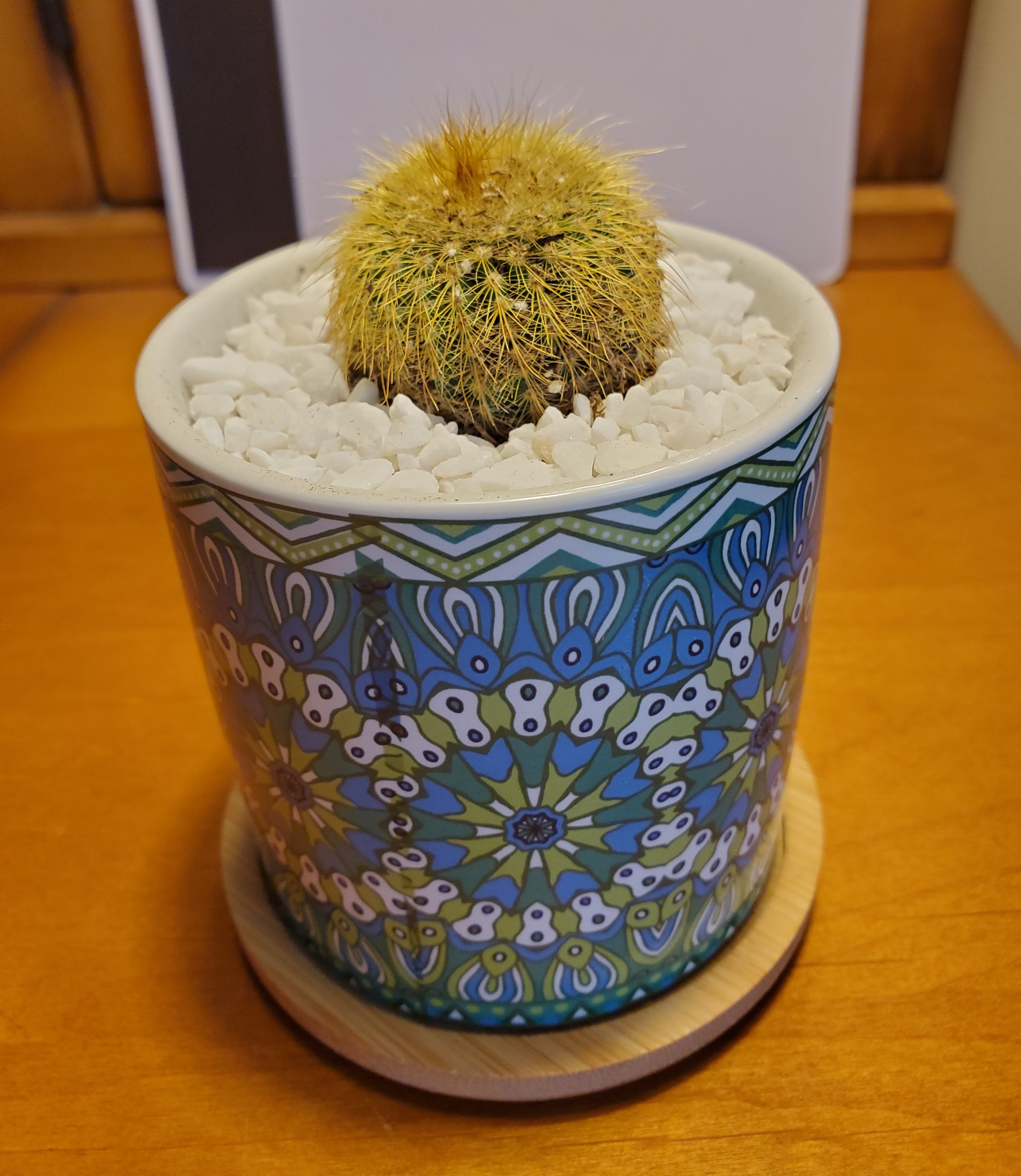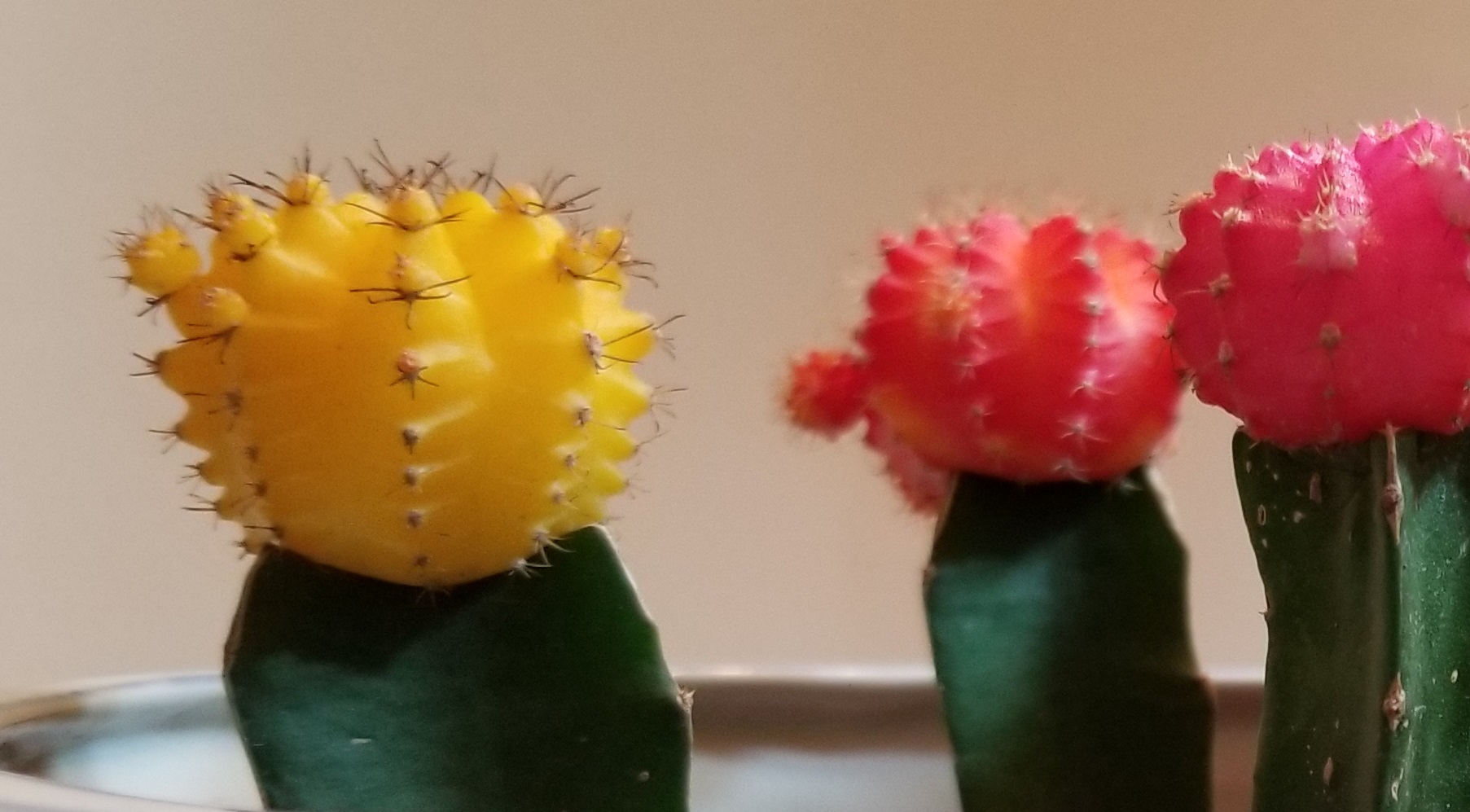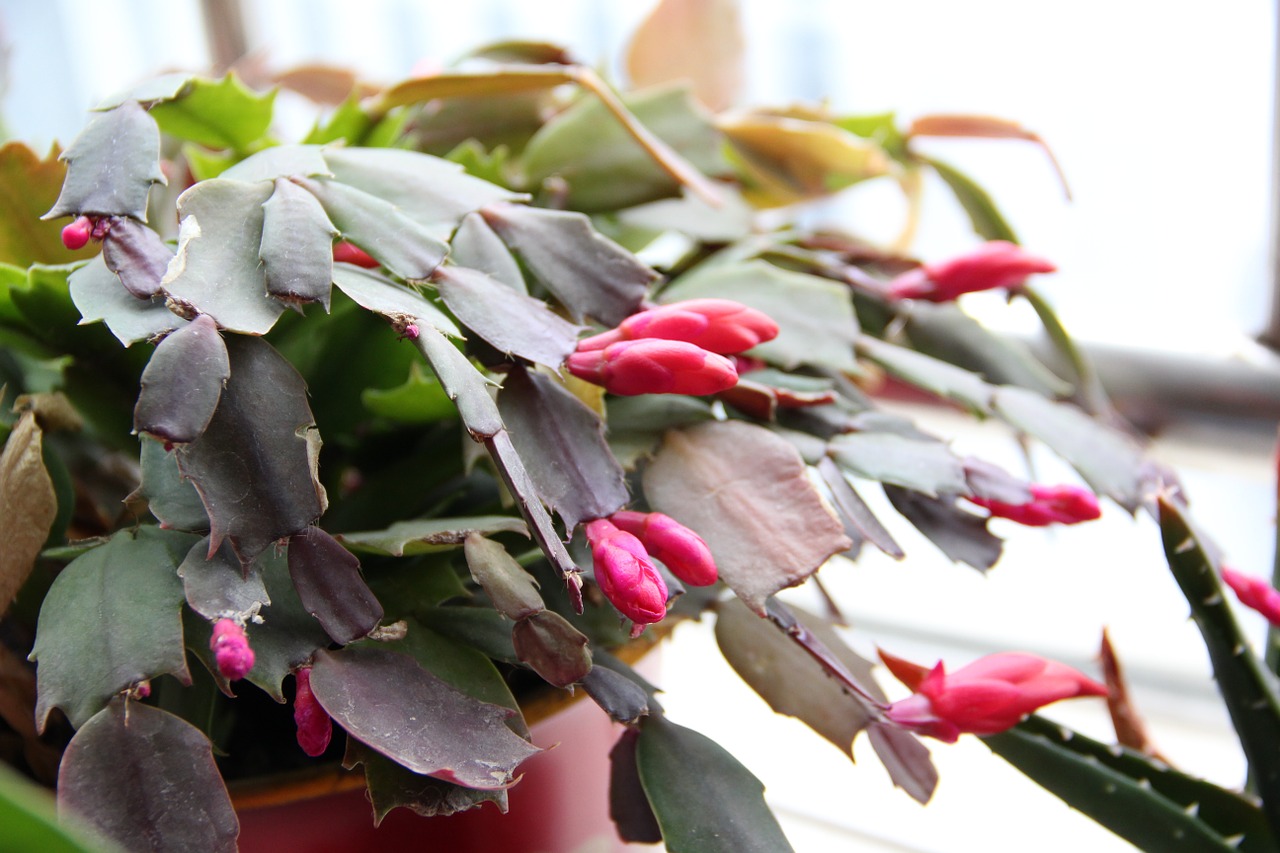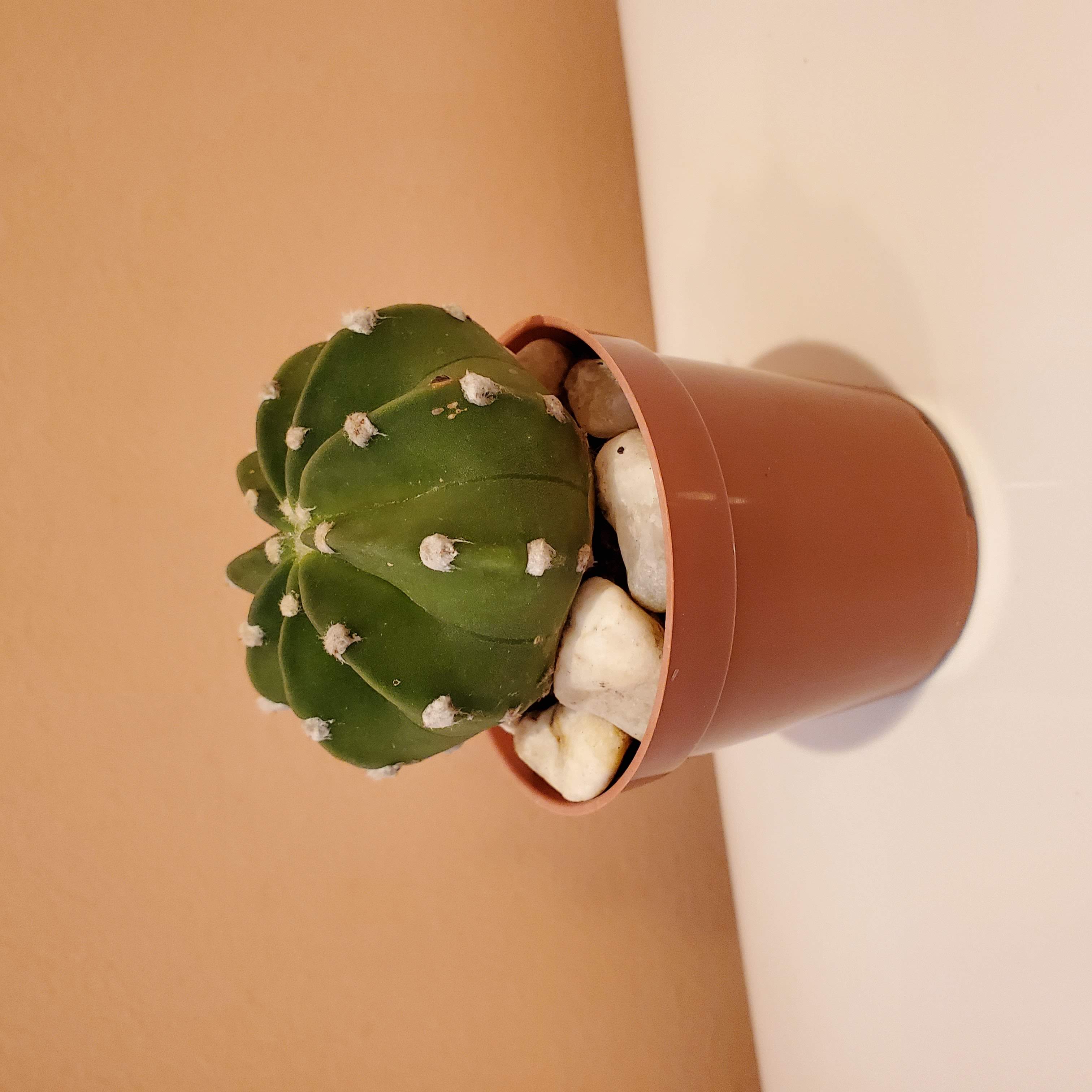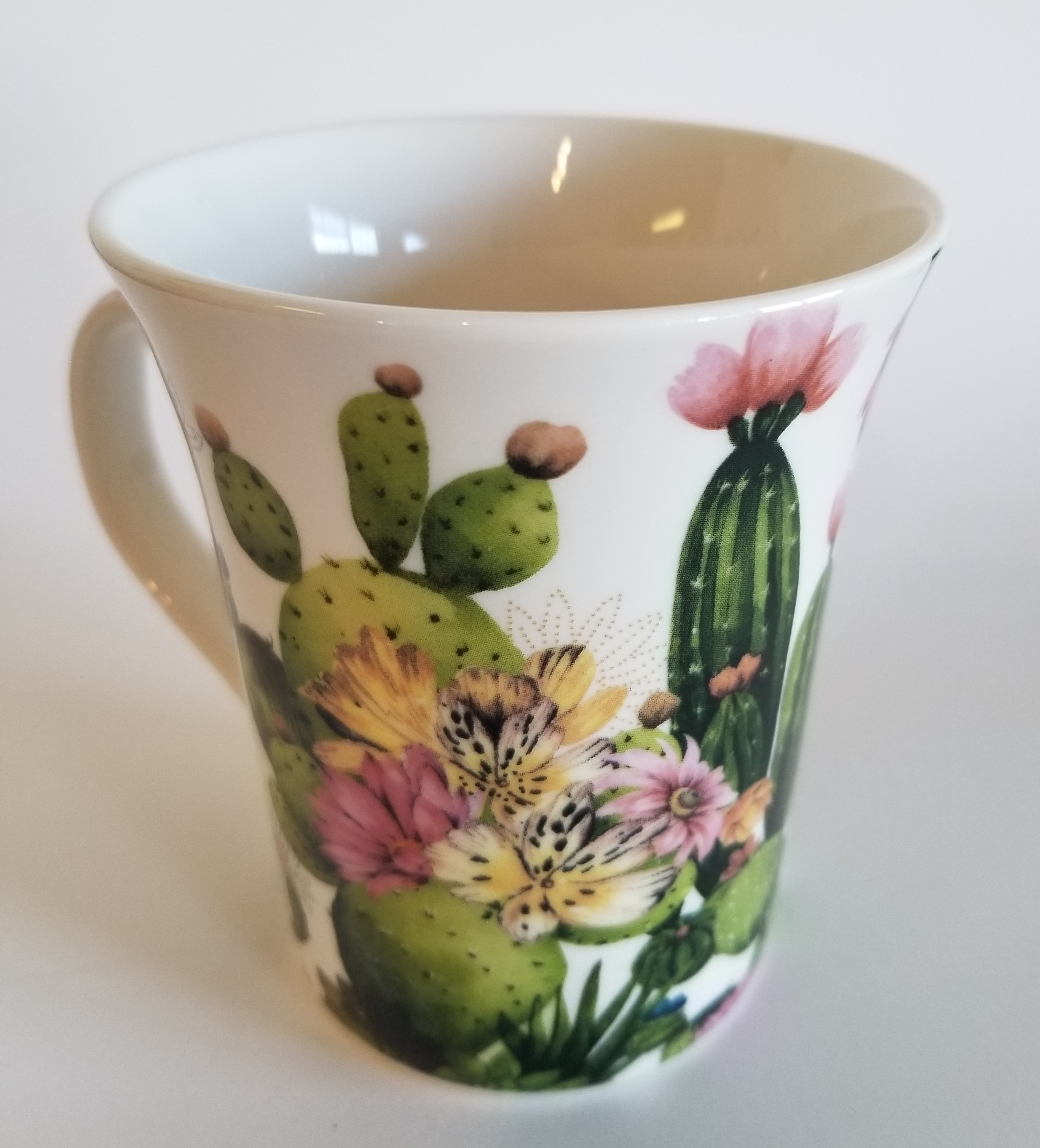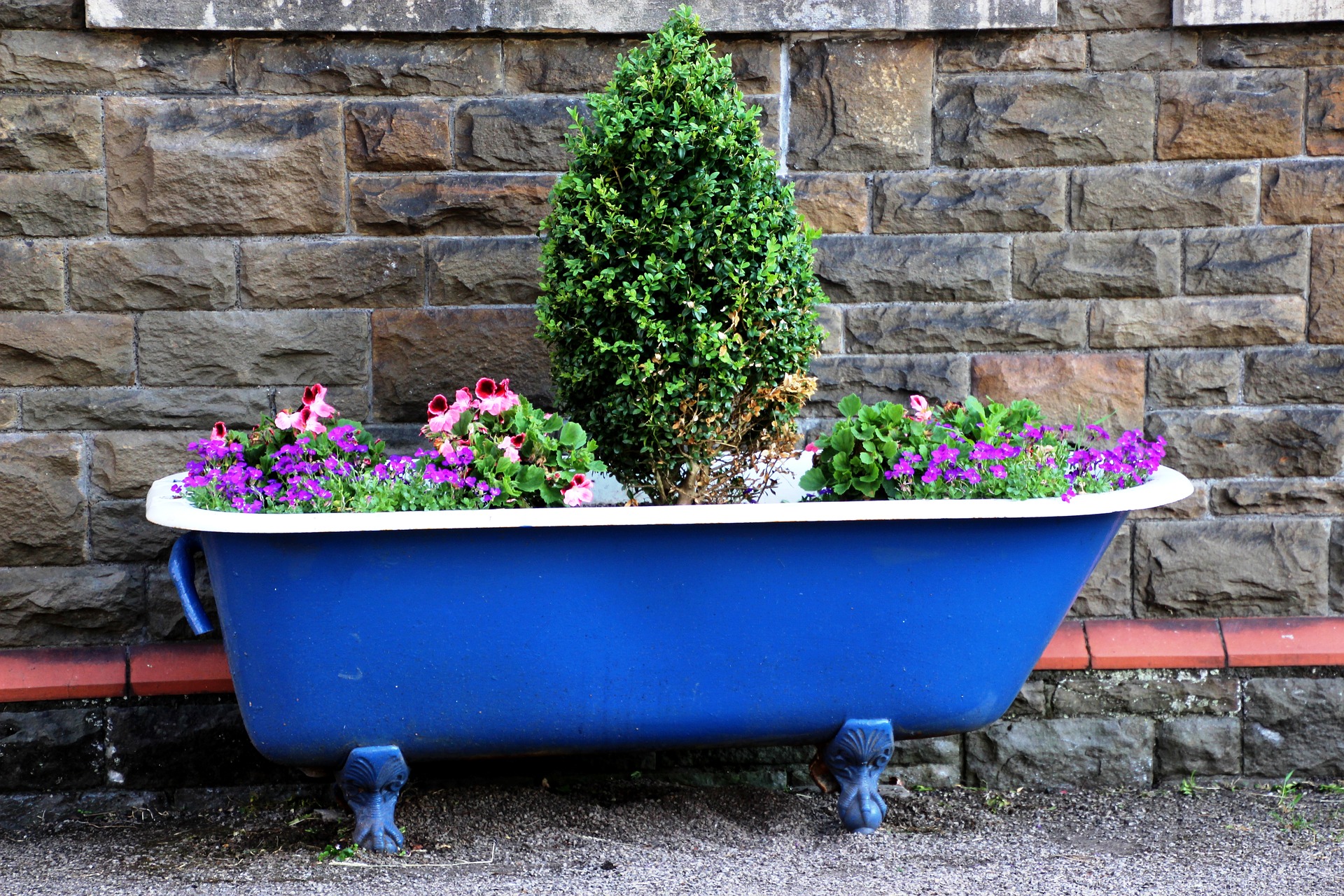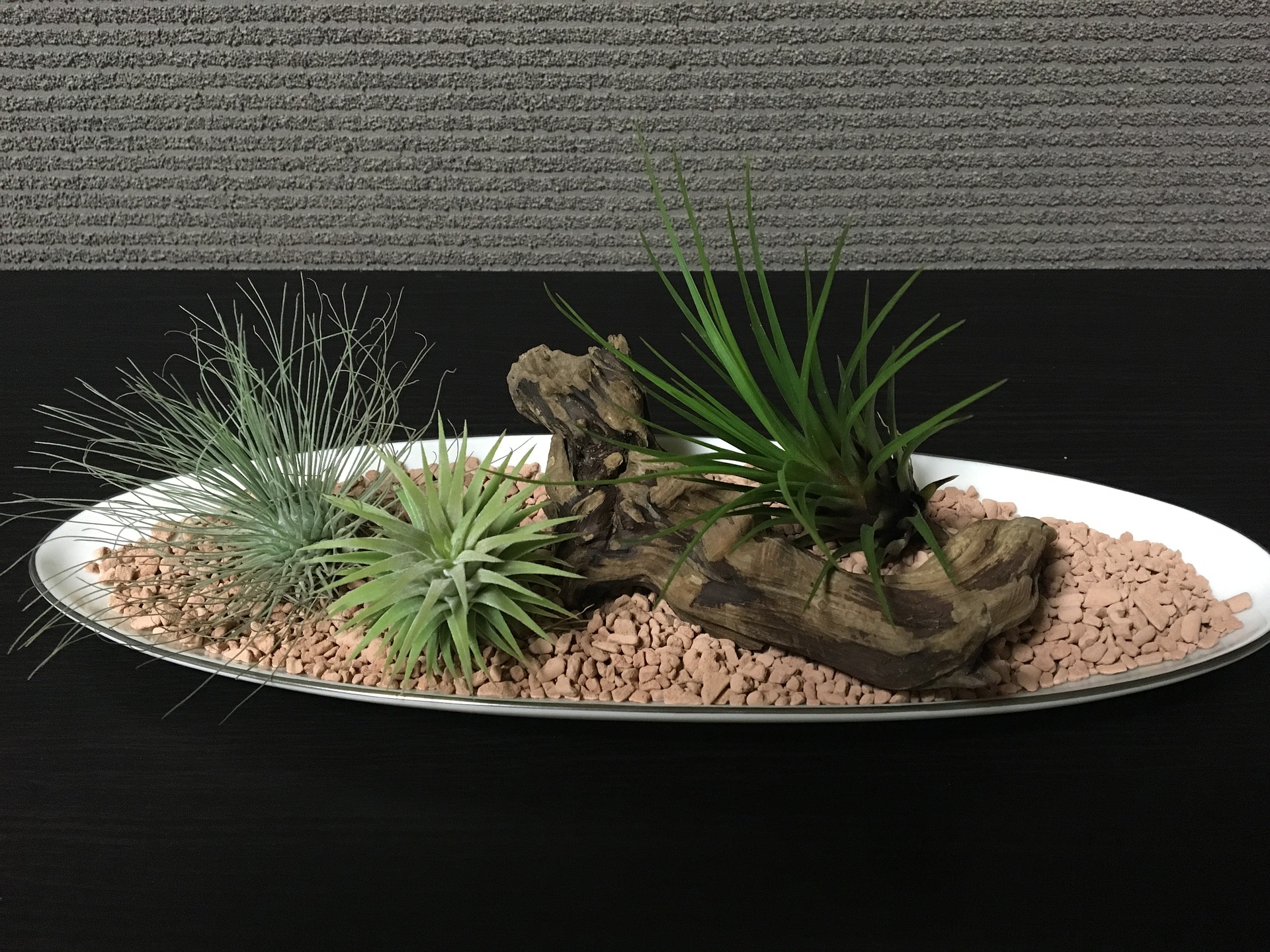- Home
- Cactus Garden
Creating a Cactus Garden Planter
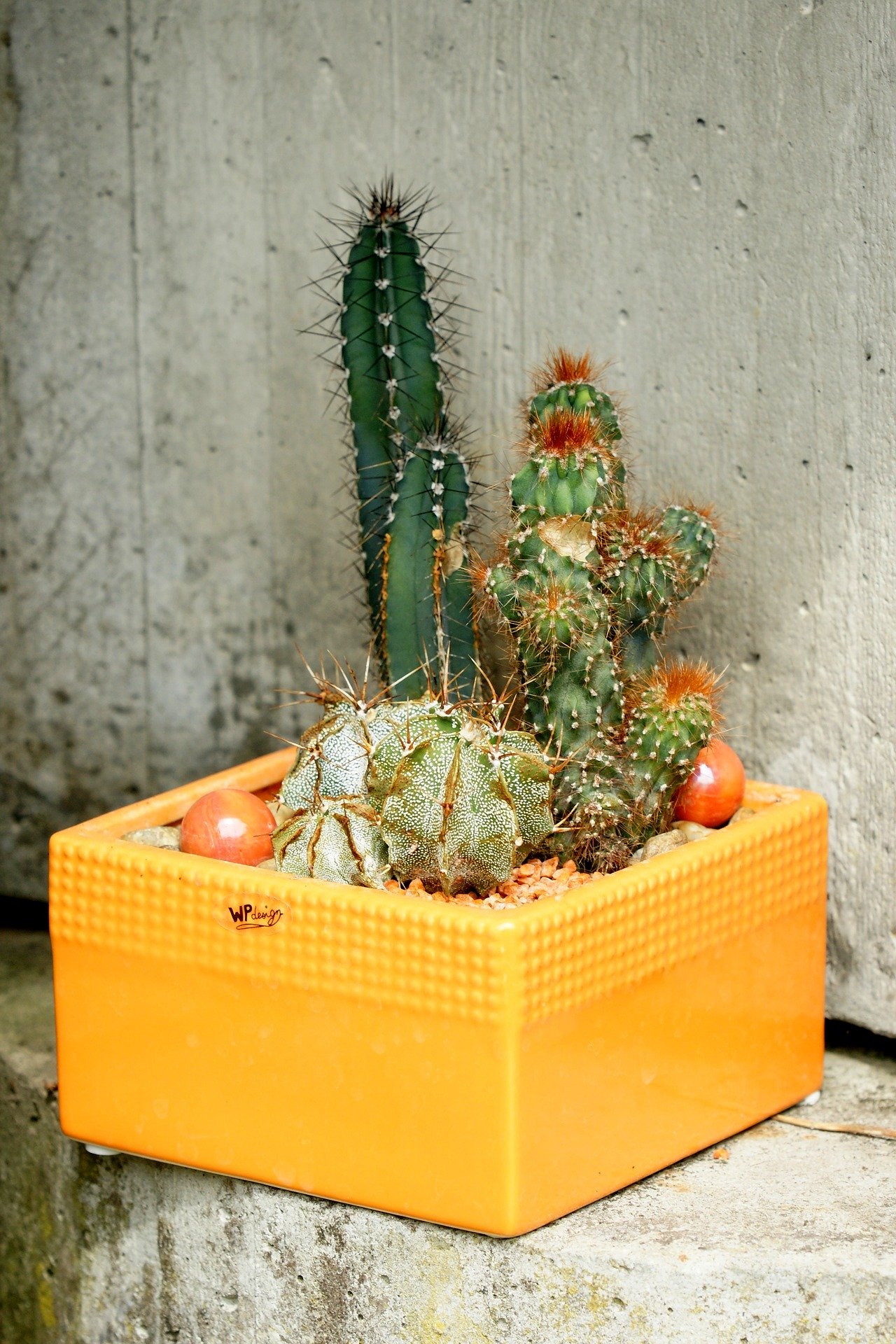
Planting a cactus garden can be one of the easiest, low-maintenance container garden ideas. And if you're low on space, a mini cactus container may be the perfect fit, because cactus usually grow very slowly.
What are the benefits to choosing cacti for your garden in a pot?
- they don't need to be watered very often,
- they grow slowly, so you won't need to repot or prune frequently,
- they don't require much if any fertilization,
- you can choose from a wide variety of shapes, sizes and textures.
There are a few things to keep in mind when creating your cactus combination garden. Keep reading below for some answers to your most common questions about creating and caring for a great-looking cactus planter.
You can also pot up individual cacti in pretty succulent pots, like this blue mandala ceramic planter. This cactus and pot is featured in our Etsy store here.
What is a Modern Indoor Cactus Garden?
According to Wikipedia, a cactus garden is a garden for the cultivation and display of many types of cacti.
A modern indoor cactus garden translates this same idea into a space-saving planter which may hold various types of small cactus against a background of decorative rocks or other topping.
What Types of Cacti are Best for a Combination Pot?
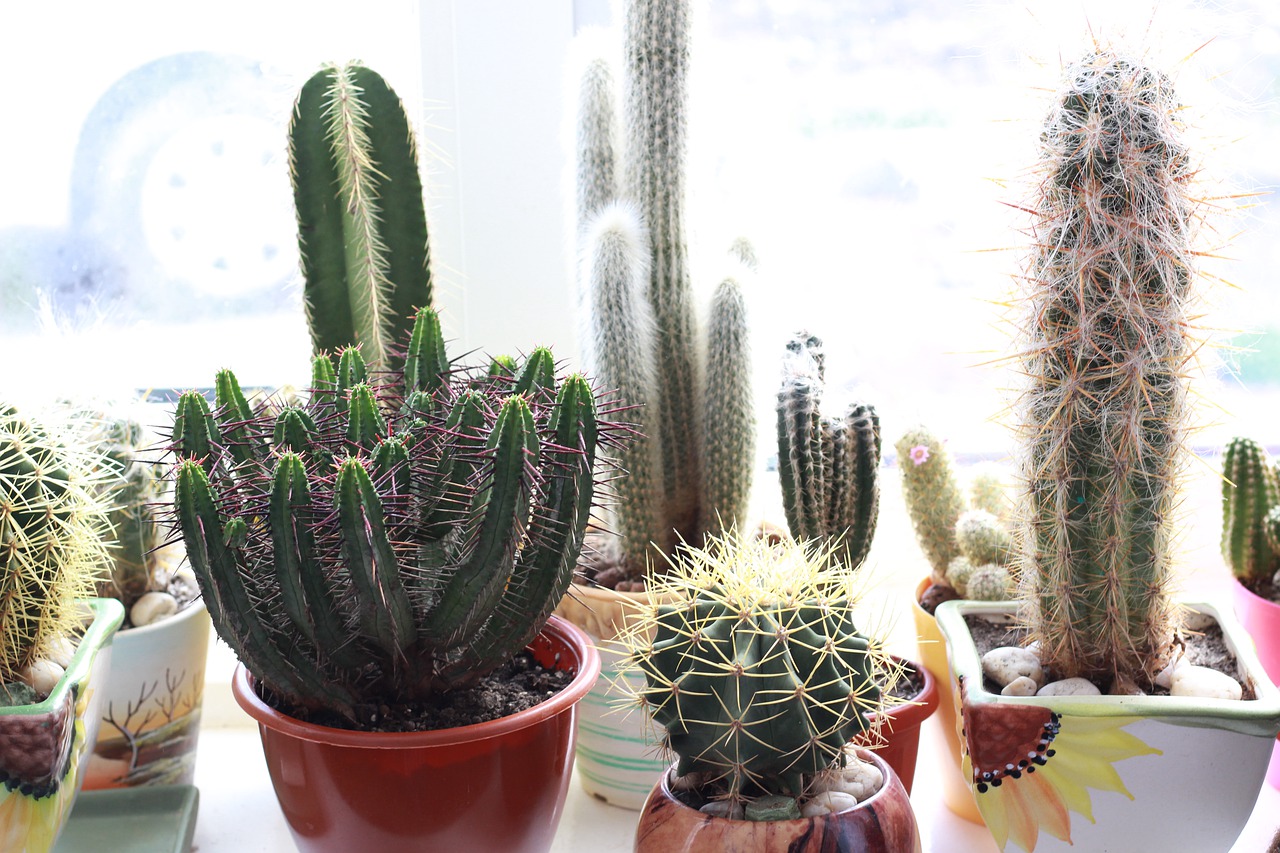
For a cactus garden in a pot, you want to select cacti that have similar light and water needs, and that don't get too large. It is also a good idea to select a variety of colors, shapes and/or textures.
Some of the most common types of cacti sold in nurseries and big box garden centers are quite suitable for a community cactus planter, such as the colorful Moon Cactus.
You can also include a few succulents in your cactus garden if you like, but make sure to select ones that like full sun and very little water. Aloe and agave would be very good, complementary choices.
Types of Cactus for a Cactus Garden Planter
Do you Need Special Soil for a Cactus Garden?
For healthy cacti, you do want to make sure to choose very well draining soil. That means when you water your plants, the soil will dry out quickly, since cactus hate to have their roots sitting in water for any length of time. A prepackaged mix that is labeled for cacti and succulents is fine. Or you could mix some sand, pumice, perlite and/or rocks in with your regular soil.
You can add accessories to your cactus garden container such as decorative rocks, gravel or sand topping (available in many colors, depending on the look you're going for), crystals or polished stones, and figurines. Just be aware that soil toppings can keep moisture from evaporating, so be careful about overwatering. You can also use cactus as the feature plants in an arid fairy garden.
What Type of Container Should I Use?
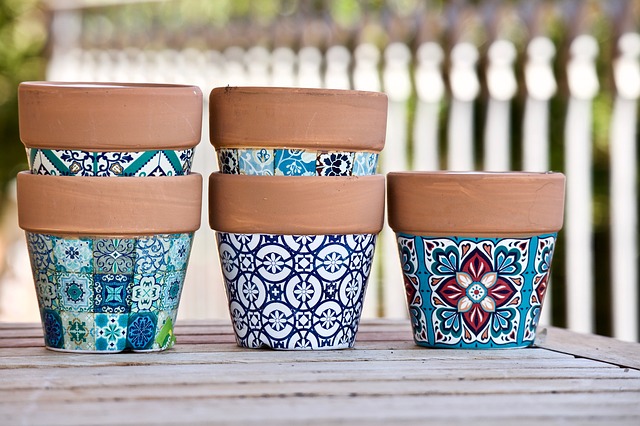
You can really use any container for growing cactus. The most important thing is that the container you choose has drainage holes. If it does not have holes, you can drill or poke holes in the bottom of the planter.
Cacti are very sensitive to over-watering, and a planter without drainage holes is likely to stay too wet and your cactus roots might rot.
The other thing to keep in mind is that most cacti do not have very deep roots, so you can get away with quite shallow containers for a cactus garden. Get creative, and use an old kitchen container such as a colander, plastic bowl, or re-use, cut down and decorate an empty food container such a gallon milk bottle (just remember to poke holes in the bottom with a knife or skewer). You can even plant your cacti in teacups and old shoes!
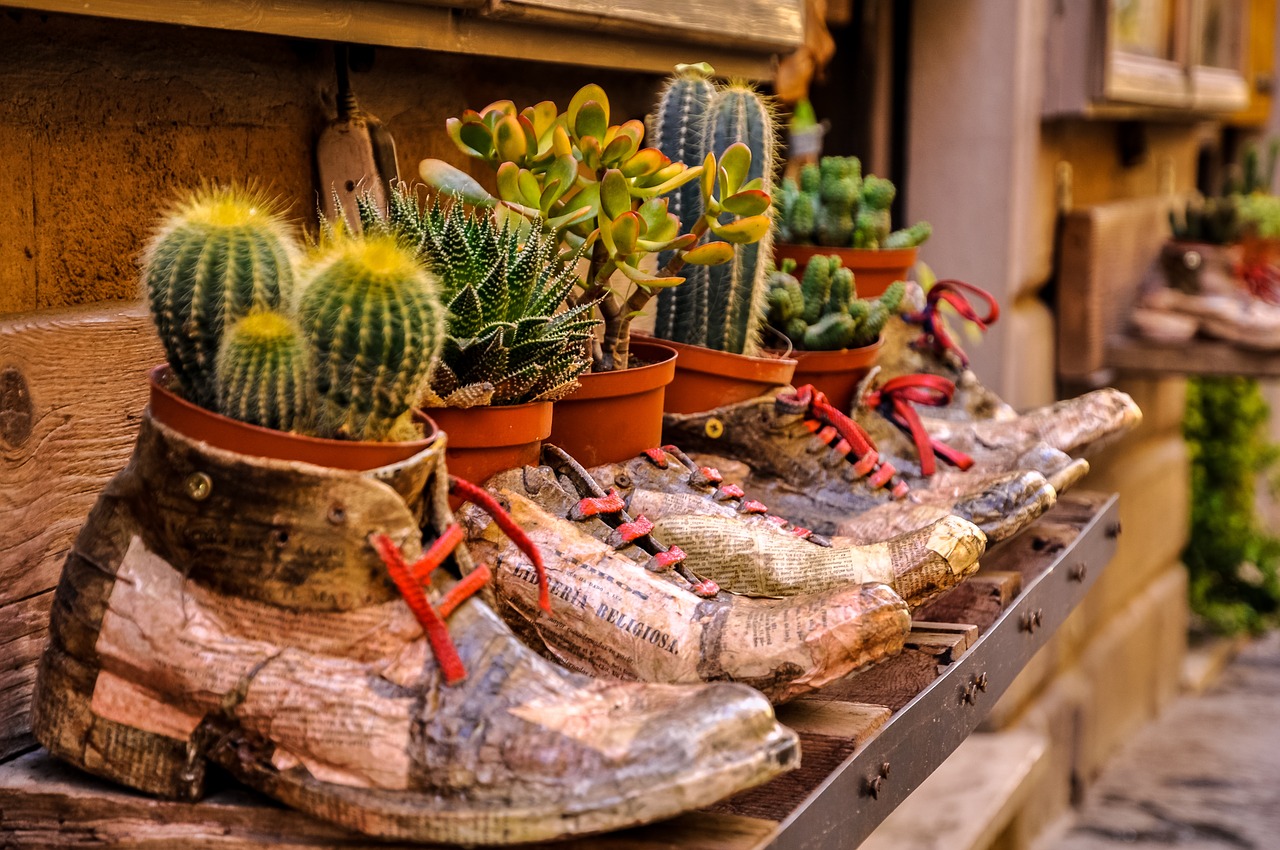 |
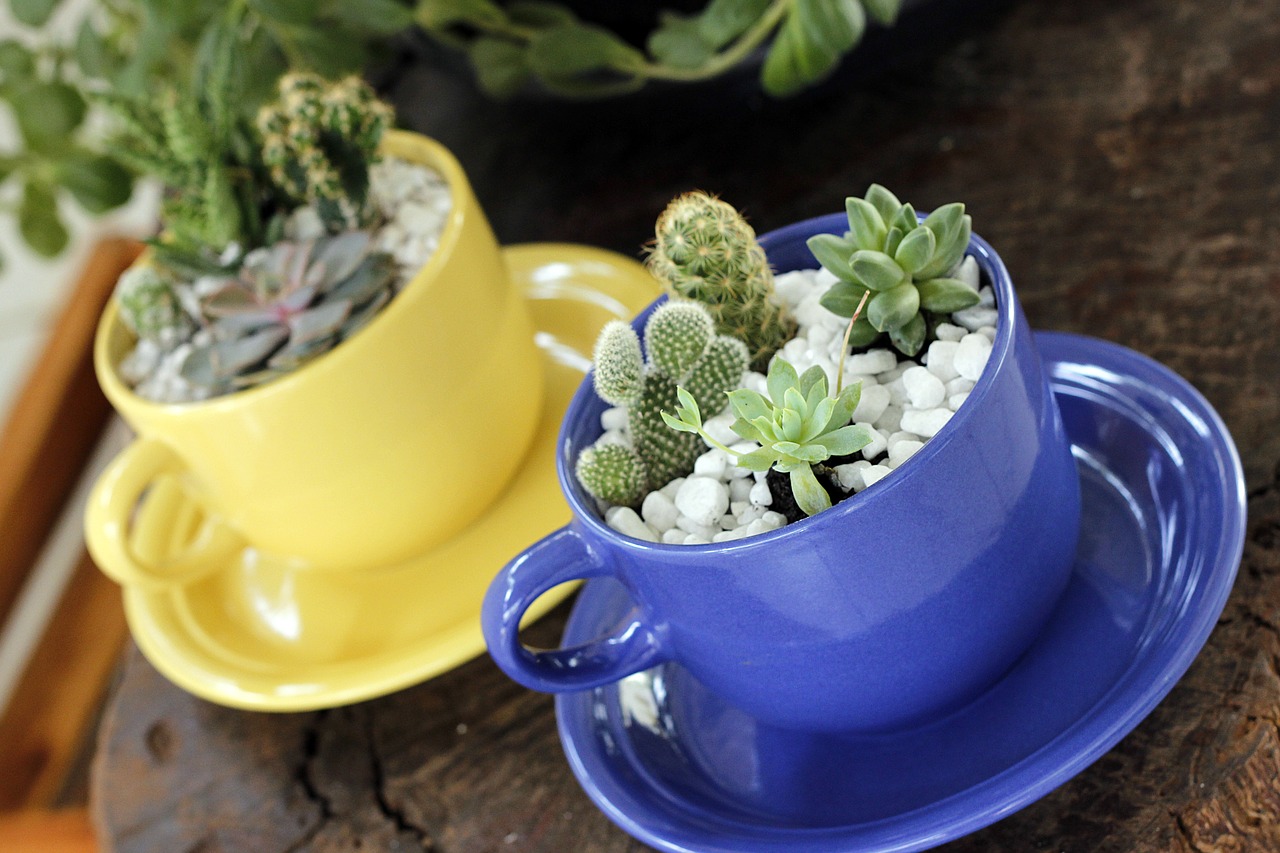 |
Another creative container idea is to plant your cacti in a decorative gift box, such as the pretty cardboard boxes you can find in greeting card stores and even dollar stores. Since cacti like dry soil, you will find that even a cardboard container will last quite a long time before it starts to break down. You can even use discarded shipping boxes for your cactus garden! Just cut them down and paint or decorate them with colorful tape.
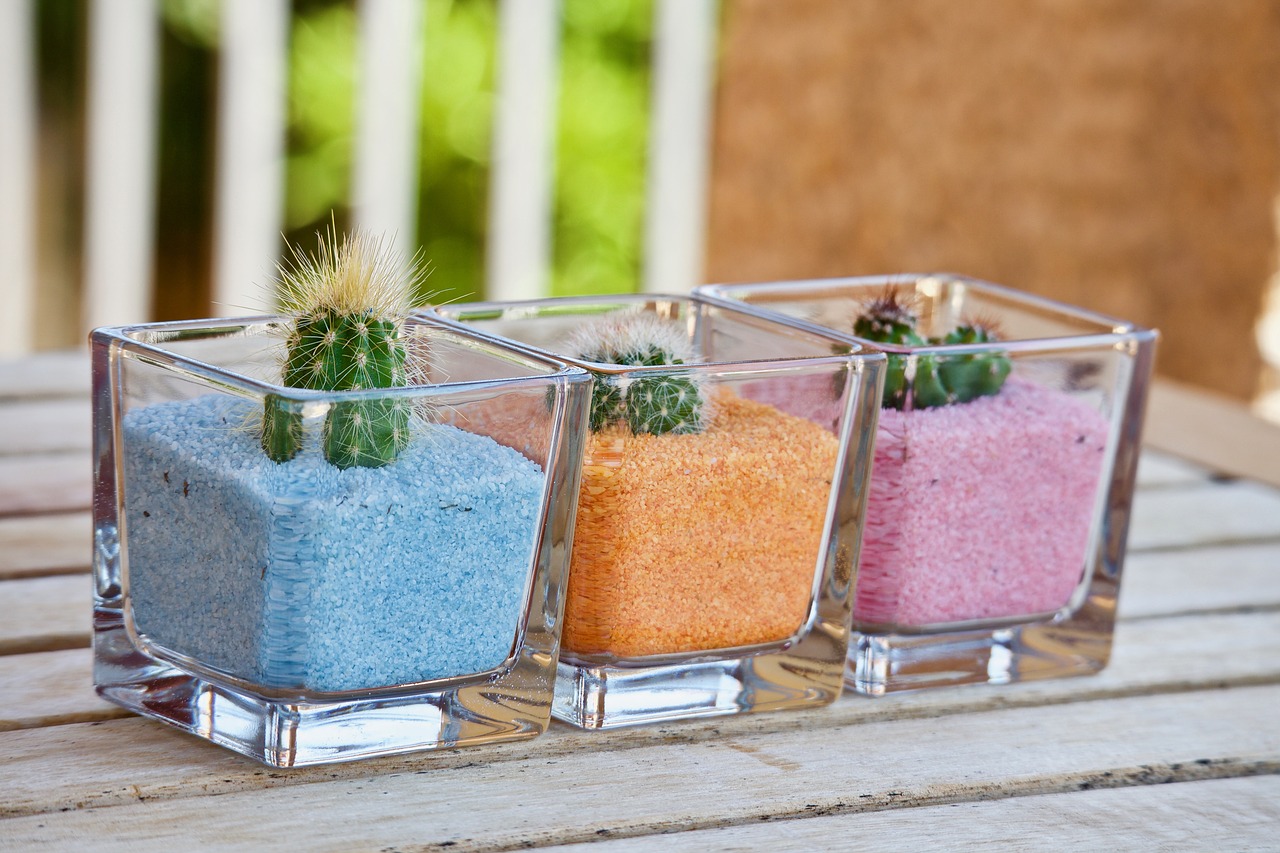
If you want to add some color to your container cactus garden, you can top-dress with some colorful sand or rocks - aquarium gravel from the pet store comes in many different colors and is affordable and safe to use with plants. Or you can place some decorative glass beads or marbles in the planter, or other decorative hardscape items.
You could even use a coffee mug or tea cup, like this cute Cactus design coffee mug in our store:
How do you Take Care of a Cactus Garden?
A cactus garden is very easy to take care of, so long as you remember two things:
- Cactus love plenty of sunlight (or a good grow light if indoors), and
- Cactus need very little water.
You will be surprised how long your cactus can go without water. Remember that many of them come from desert regions of the world, where they may go weeks or even months without water. But your cactus will enjoy a good soak every now and then (just as they get a rainstorm in nature occasionally), so long as their soil is well draining and dries out again quickly.
In the summertime, you might water your cactus container once or twice a month. But in the winter, depending on their environment, they can mostly do without water since the plants will be dormant.
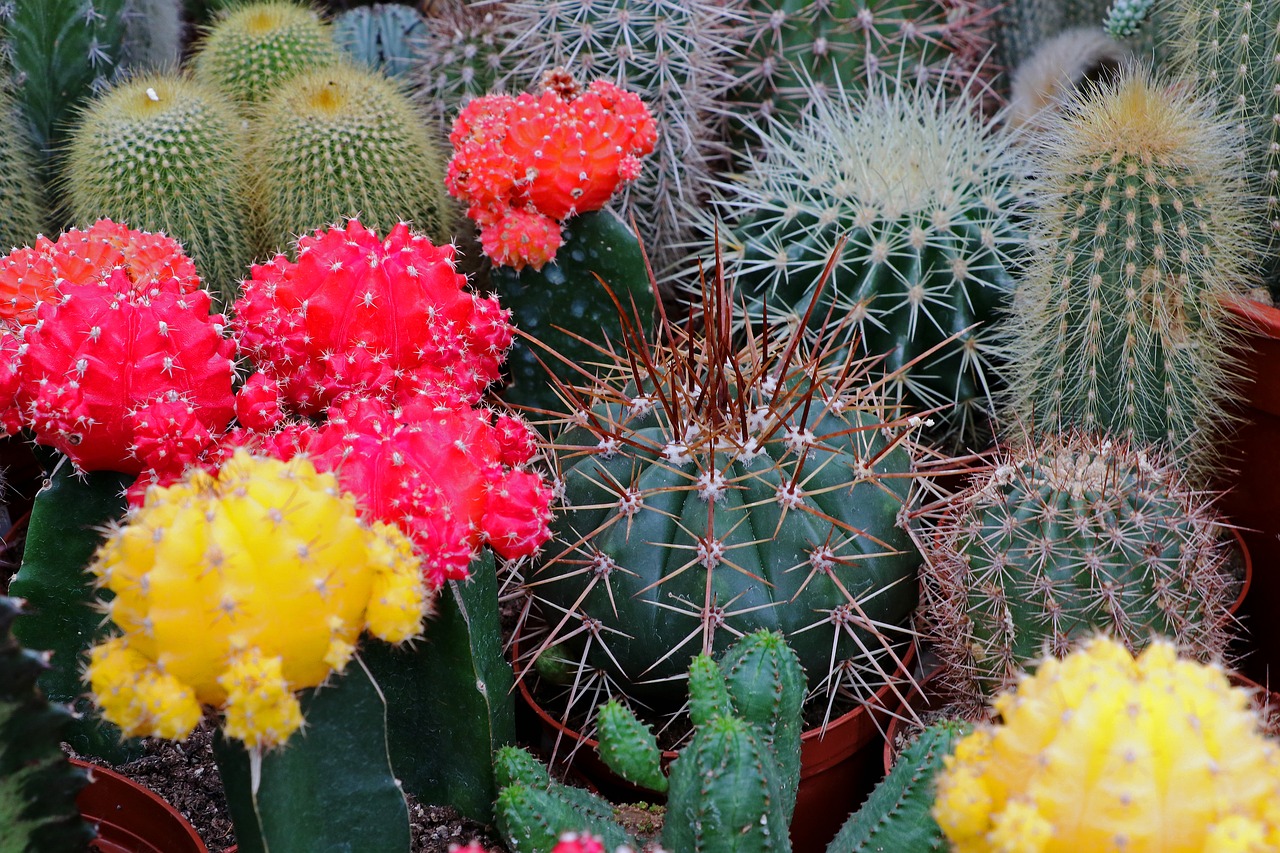
Your cactus garden will thrive if you can give it 6-12 hours of full sunlight or grow lights per day. If your cactus garden is inside, then it is a good idea to purchase a grow light if you don't have a bright, sunny, south-facing window. You can find some perfectly good inexpensive clip-on LED grow lights, or use a desk lamp will a full-spectrum LED bulb.
How do you Create a Zen Cactus Garden Container?
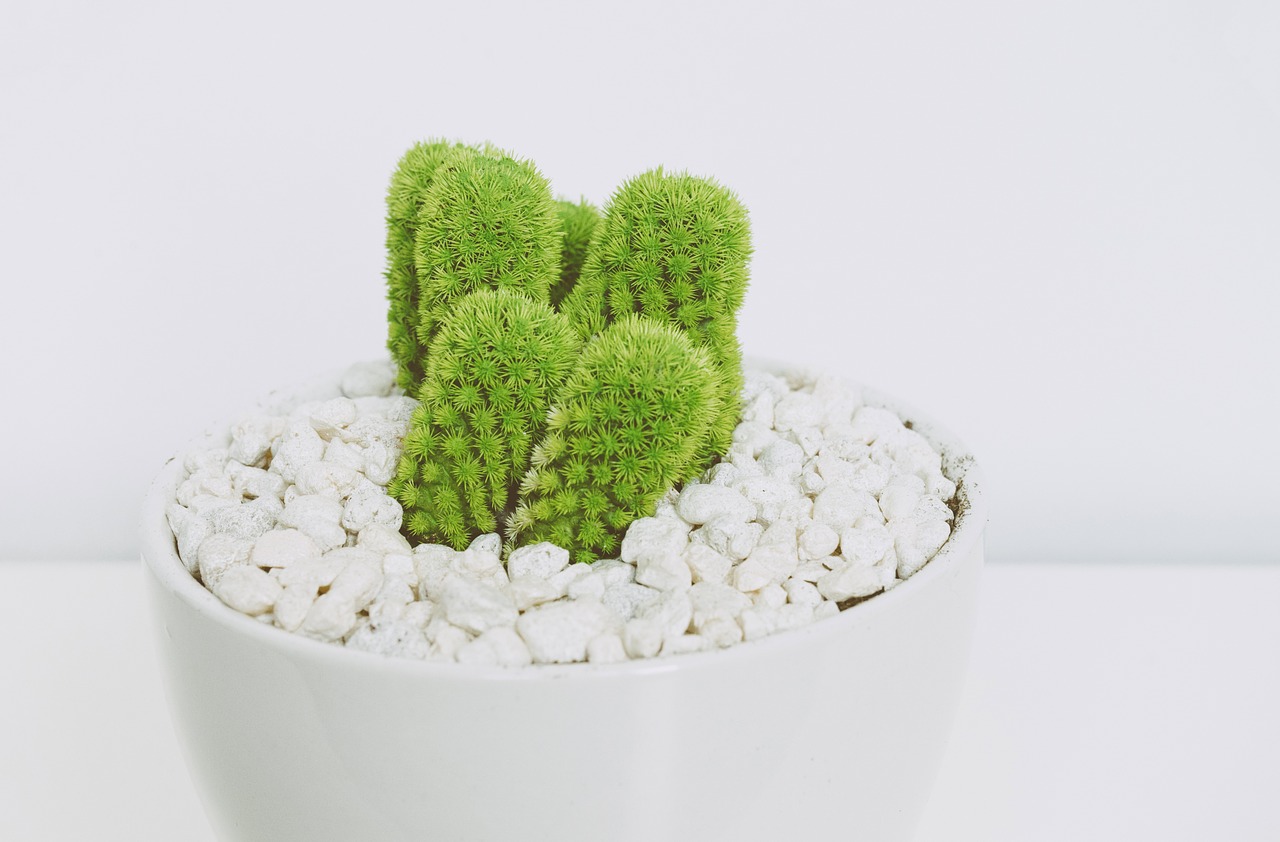
A Zen cactus garden usually involves just a few cacti in a symmetrical arrangement, with sand or rocks and a few boulders often with a geometric design.
You can recreate this same look in a planter or pot by using two or three well-placed architectural-shaped cacti, white / black / neutral colored sand, and a few rocks to represent the boulders you might find in a larger Zen garden.
For some other ways to enjoy a garden in pots, look at this article on growing a fairy garden.
- Home
- Cactus Garden
